2015 Mustang Gt Top Speed
The 2015 Ford Mustang GT Fastback is a Rear-wheel drive Coupe. It can accommodate up to 4 passengers. It has 2 Doors and is powered by a 5.0L V8 DOHC 32-valve engine which outputs 435 hp @ 6500 rpm and is paired with 6-speed automatic transmission with manual mode gearbox. The 2015 Ford Mustang GT Fastback has cargo capacity of 382 Liters and the vehicle weighs 1681 kg. In terms of ride assists, the 2015 Ford Mustang GT Fastback has stability control and traction control in addition to anti-lock brake system (ABS). The vehicle has an optional engine as well It offers Reverse sensing system and Rear View Camera. Safety features also include Driver-side front airbag and Passenger-side front airbag. The front suspension is Independent front suspension while the rear suspension is Independent rear suspension. The car also features a Yes It has 18" alloy wheels as standard. Electronic features include Cruise Control. For convenience, the car has Power windows and Power door locks. There is also a remote keyless entry feature. Moreover, the car has. The steering wheel has audio control buttons. In terms of performance, the car has 475 N.m of torque and a top speed of 278 km/h. The 2015 Ford Mustang GT Fastback accelerates from zero to 60 mph in 4.7 seconds and hits quarter mile at 12.6 seconds. Fuel consumption is 14.9 L/100km in the city and 9.5 L/100km in the highway. The car price starts at $ 36,999
2015 Ford Mustang GT 0-100 kmh kph 0-60 mph Tachovideo Beschleunigung Acceleration
2015 Ford Mustang GT - 0-60 with Launch Control
Ford Mustang Fastback 2.3L Ecoboost (2015) acceleration 0-250 km/h | ExoticCars.pl
Forza 7 Drag race: BMW M4 vs Ford Mustang GT (2015)
2015 Ford Mustang GT 1/4 Mile Runs
2015 Ford Mustang GT (0-165 MPH, 265km/h) POV- Autobahn Acceleration, Top speed TEST ✔
2015 Ford Mustang Used Price Estimates
Estimates based on a driving average of 12,000 miles per year
| Used Condition | Trade In Price | Private Party Price | Dealer Retail Price |
|---|---|---|---|
| Outstanding | $ 15,405 | $ 17,676 | $ 19,920 |
| Clean | $ 14,880 | $ 17,055 | $ 19,187 |
| Average | $ 13,830 | $ 15,814 | $ 17,720 |
| Rough | $ 12,781 | $ 14,572 | $ 16,254 |
The new Mustang's styling is pretty distinctive, and it gives the car a more aggressive look. Although the side window design calls to mind a modern Aston Martin (certainly not a bad association), classic Mustang styling cues abound elsewhere, from the large trapezoidal grille and angled-back headlights to the fastback roof line and three-bar taillights. The wheelbase and overall length are similar to the outgoing car, but the new one sits about 1.5 inches lower, is about 1.5 inches wider and has a 3-inch-wider rear track. Meanwhile, the cabin boasts higher-quality materials, more elbow room and a sportier, smaller, leather-wrapped steering wheel that both tilts and -- finally -- telescopes.
Our take is that the new Mustang drives notably better, has a nicer interior and still looks cool. But the 2015 Mustang has, in keeping with tradition, formidable competition from the 2015 Chevrolet Camaro and 2015 Dodge Challenger. Like the Mustang, they both offer eye-catching styling, rear-wheel drive and thrilling V8 power. The Chevy is a more direct competitor, given its similar proportions and small backseat, while the larger Dodge offers an adult-friendly backseat. Those shopping this segment may also consider the well-rounded 2015 Hyundai Genesis coupe. But should you place your money on Ford's horse, we think you'll be pretty happy with the ride.
The 2015 Ford Mustang has six trim levels: V6, EcoBoost, EcoBoost Premium, GT, GT Premium and GT 50 Years Limited Edition.
The Mustang V6 comes with 17-inch alloy wheels, xenon headlights, LED taillights, a limited-slip rear differential, keyless ignition and entry, integrated blind-spot mirrors, cruise control, air-conditioning, full power accessories, a tilt-and-telescoping leather-wrapped steering wheel, a rearview camera, the Sync voice control system (with 4.2-inch multifunction display) and a six-speaker sound system with a CD player, two USB ports and an auxiliary audio jack.
Options include 18-inch wheels, a rear spoiler, rear park assist, a power driver seat and an anti-theft system.
The EcoBoost includes the V6's standard features along with the turbocharged four-cylinder engine, foglamps, a rear spoiler, six-way power front seats, aluminum dash trim, active noise cancellation and a "Tracks Apps" system that can provide performance data such as 0-60-mph and quarter-mile times, lateral acceleration and stopping distances from 60 mph or 100 mph.
Options echo those of the V6 but further include an EcoBoost Performance package (19-inch wheels with summer tires, firmer suspension calibrations, upgraded brakes, aluminum dash trim, added gauges and unique steering and chassis tuning) and Recaro sport seats.
To the EcoBoost's standard equipment, the EcoBoost Premium adds 18-inch wheels, selectable drive modes, aluminum and chrome interior accents, dual-zone automatic climate control, leather upholstery, heated and ventilated front seats, a nine-speaker audio system, satellite radio and an 8-inch touchscreen with the MyFord Touch interface.
Options for the EcoBoost Premium echo those of the standard EcoBoost but further include different wheels, adaptive cruise control, blind-spot monitoring, rear cross-traffic alert, driver memory settings, an upgraded 12-speaker audio system, a navigation system, special interior trim and a 50 Years Appearance package (unique grille, wheels, gas cap and upholstery).
The Mustang GT includes all the EcoBoost's standard features along with the V8 engine, 18-inch wheels, chrome exhaust tips, line-lock (for track use), launch control (manual transmission), upgraded brakes and hood vents.
Options for the GT are similar to those for the Mustang V6. Also available is the GT Performance package that gets you 19-inch wheels with summer tires, a rear spoiler delete, a Torsen limited-slip differential, firmer suspension calibrations, upgraded Brembo brakes (manual transmission), additional bracing, added gauges, and unique steering and chassis tuning.
The GT Premium comes with the same added and optional features as the EcoBoost Premium.
The Mustang GT 50 Years Limited Edition includes all the GT Premium's features along with exclusive paint colors (Wimbledon white or Kona blue), unique 19-inch wheels, added chrome exterior trim, the GT Performance package, unique upholstery, the 12-speaker sound system, the navigation system and unique "50 Years"-emblazoned grille, gas cap, door sills, dash and floor mats.
A 3.7-liter V6 engine with 300 hp and 280 lb-ft of torque is standard on the base Mustang. The EcoBoost has a turbocharged 2.3-liter four-cylinder engine packing 310 hp and 320 lb-ft. The GT boasts a 5.0-liter V8 with 435 hp and 400 lb-ft. (Note that those outputs for the EcoBoost and V8 reflect the use of premium gasoline.) Any engine can be paired to either a six-speed manual or a six-speed automatic with paddle shifters.
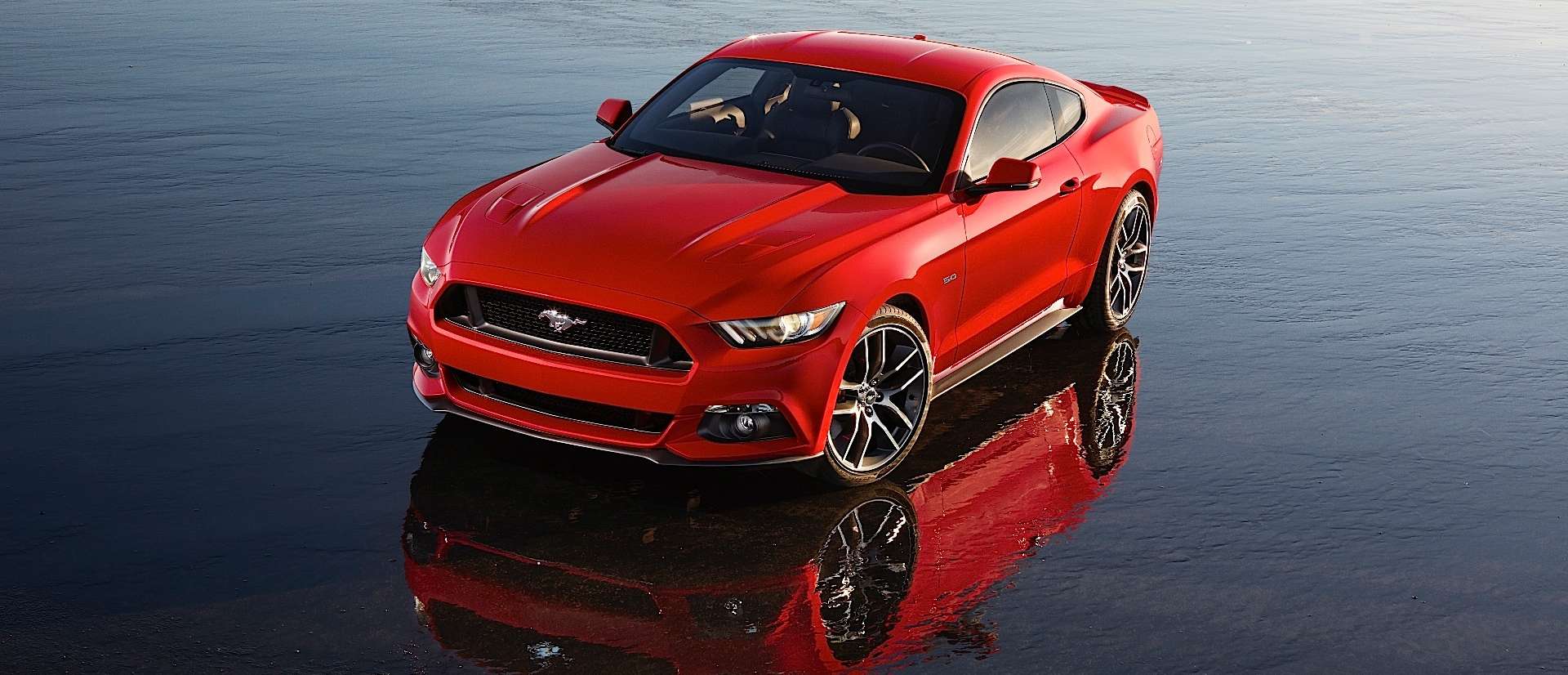
In testing, a Mustang EcoBoost with the automatic transmission accelerated from zero to 60 in a respectable 5.9 seconds. When testing the EcoBoost with the manual transmission and the Performance Pack, we achieved similar results. A GT with the Performance Pack and a manual transmission ran the sprint in just 4.7 seconds, while a GT without the Performance Pack and with an automatic transmission did it in 4.7 seconds. Both times are a bit quicker than average in this speedy segment.
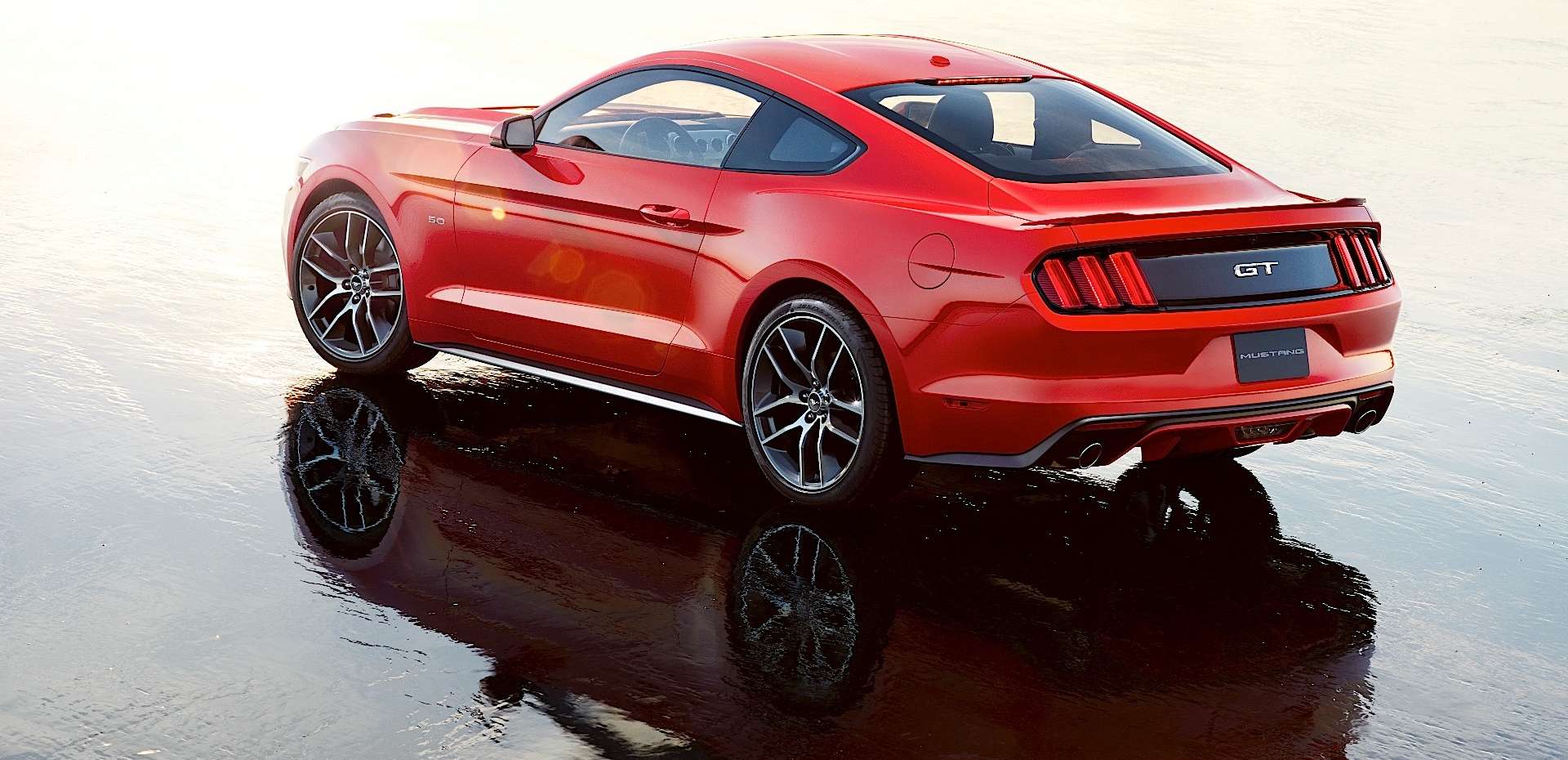
EPA fuel economy estimates stand at 26 mpg combined (22 city/31 highway) for the EcoBoost with the manual. With the automatic, EcoBoost numbers are 25 mpg combined (21 city/32 highway). The V6 manual rates 21 mpg combined (17/28) while the automatic version rates 22 combined (19/28). The V8 manual earns a 19 mpg combined estimate (15/25) while the automatic is the same but with 1 mpg better in the city.
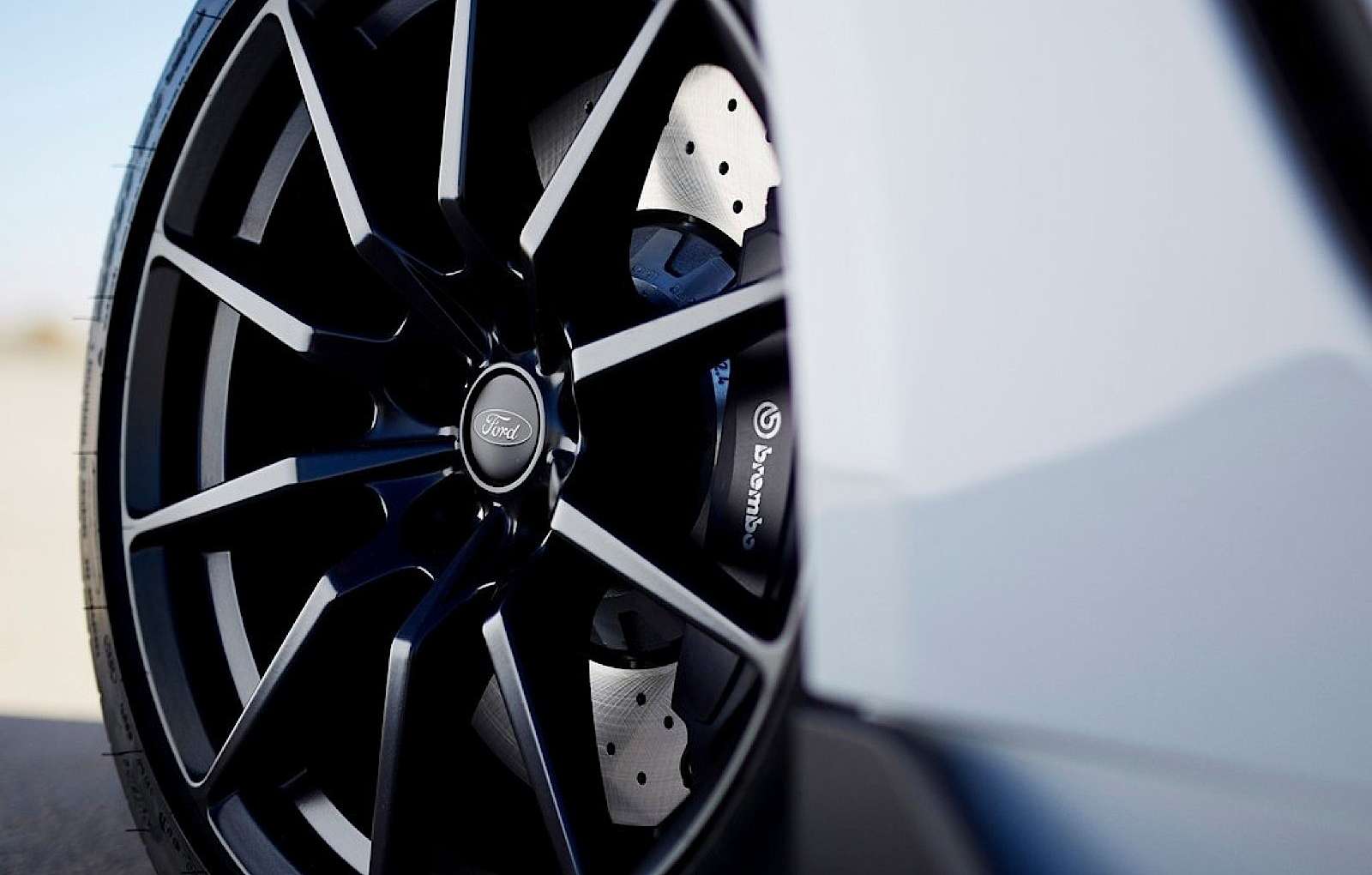
Standard safety features for all 2015 Ford Mustangs include antilock disc brakes, traction and stability control, a rearview camera, front-seat side airbags, side curtain airbags (coupe only) and a driver's knee airbag. Also standard are Ford's MyKey system (which allows owners to limit speed and audio volume levels for young drivers) and, for manual-transmission models, hill-start assist.
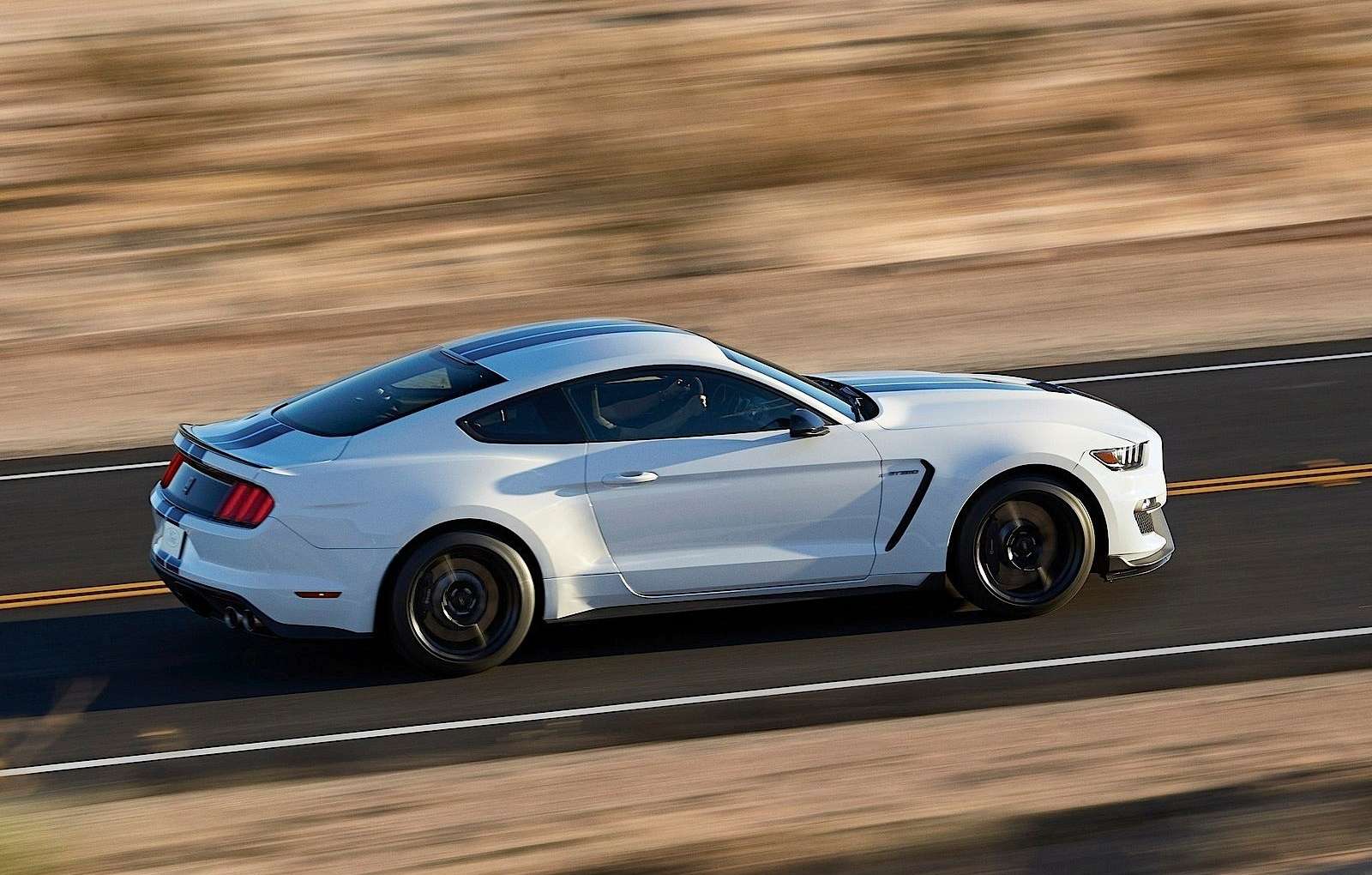
Optional on the "Premium" trim levels and standard on the 50 Years Limited Edition are blind spot and cross traffic warning systems.
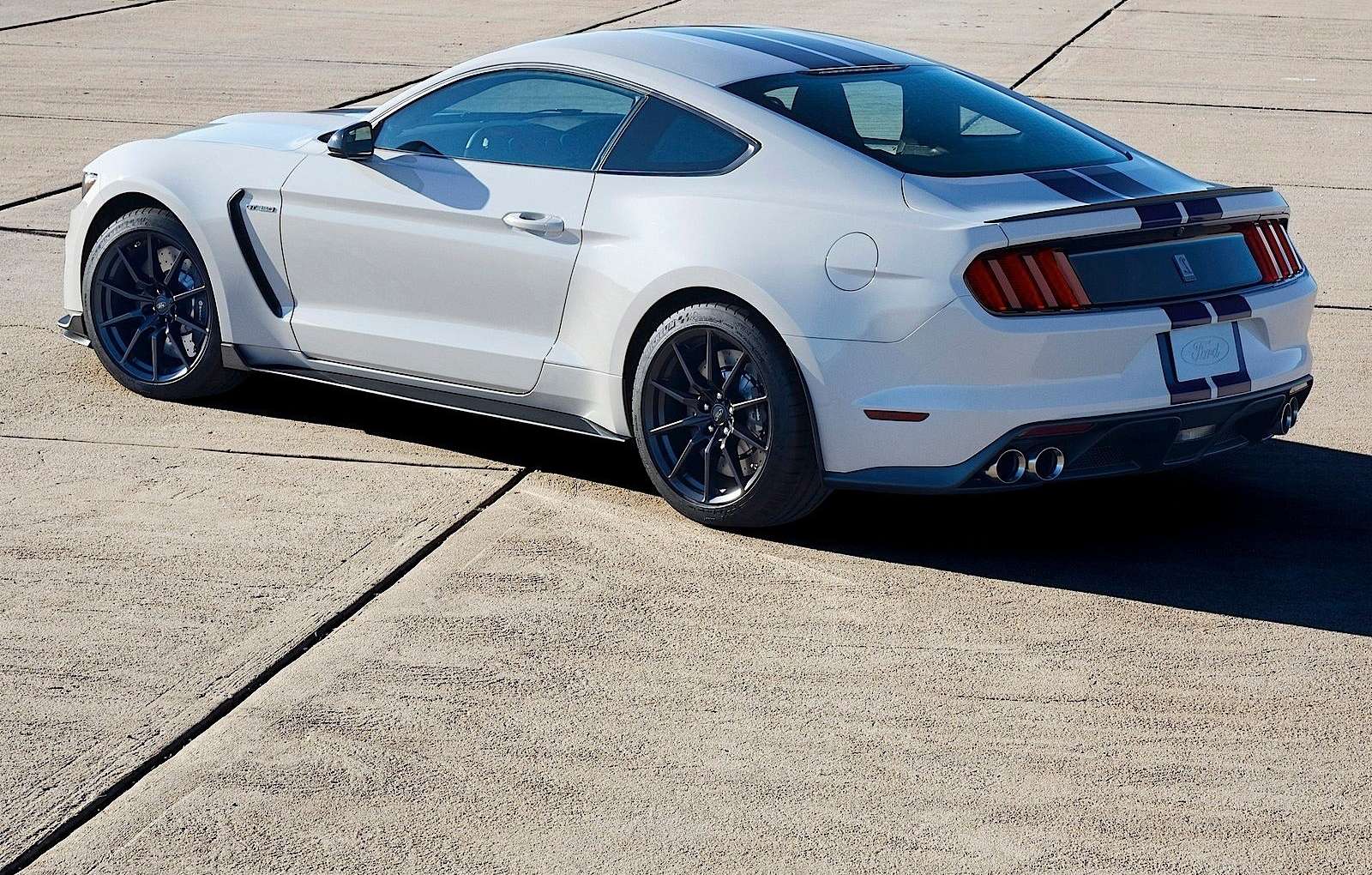
During brake testing, both a Mustang EcoBoost and a Mustang GT (both equipped with the optional Performance package) stopped from 60 mph in just 108 feet. That's a better-than-average stopping performance for this segment. Without the Performance package or summer tires, a standard GT stopped from 60 mph in 118 feet which is definitely longer than average amongst its rivals.
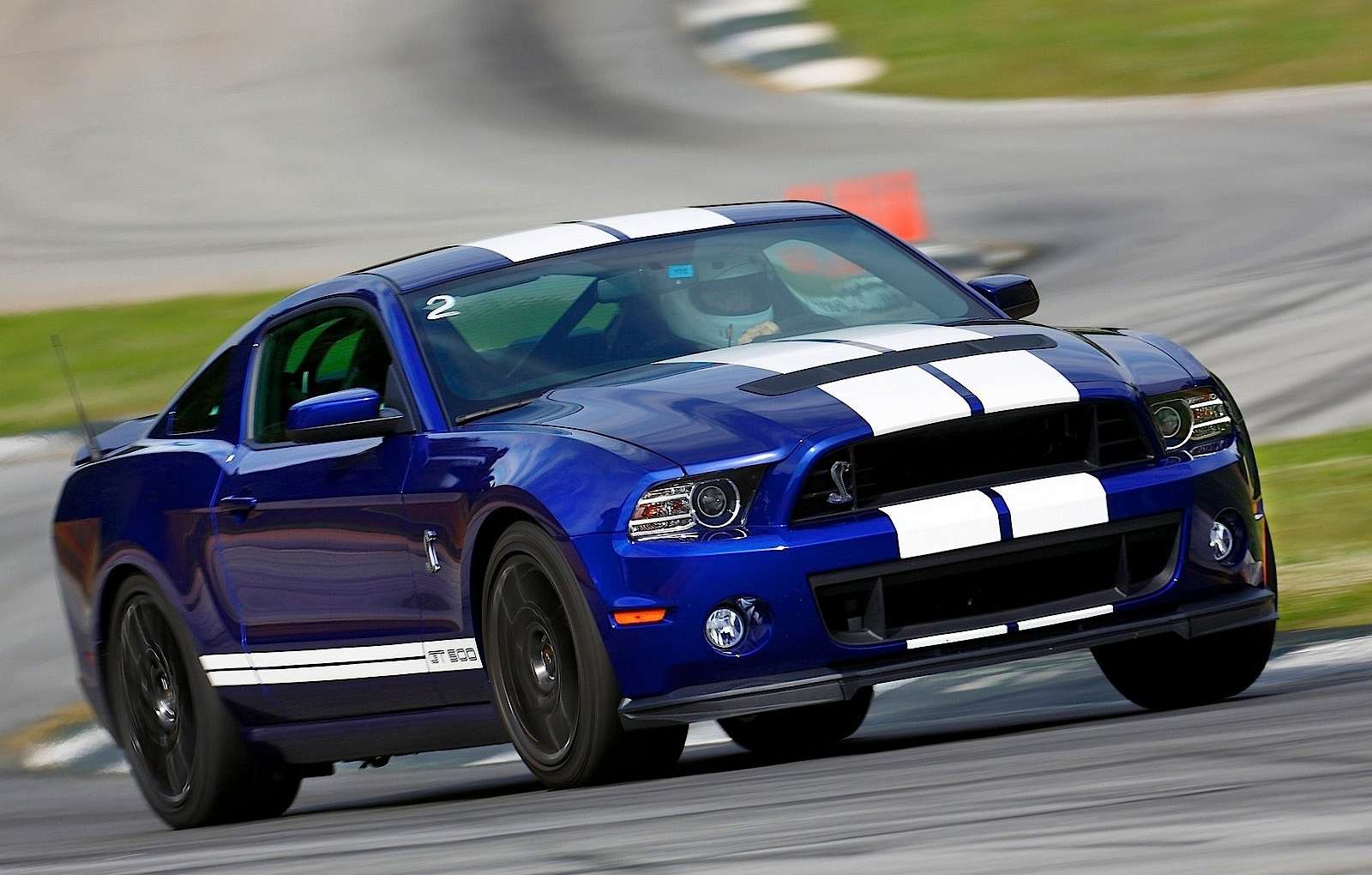
In government crash tests, the Mustang coupe earned a five-star rating (out of a possible five) for overall crash protection, with five stars for total front-impact protection and five stars for total side-impact protection. The independent Insurance Institute for Highway Safety gave the Mustang coupe its second best rating of Average its small-overlap front-impact crash test and the top rating of Good in moderate-overlap front-impact and side-impact crash tests. It also received a Good rating for roof strength and head restraints (whiplash protection).
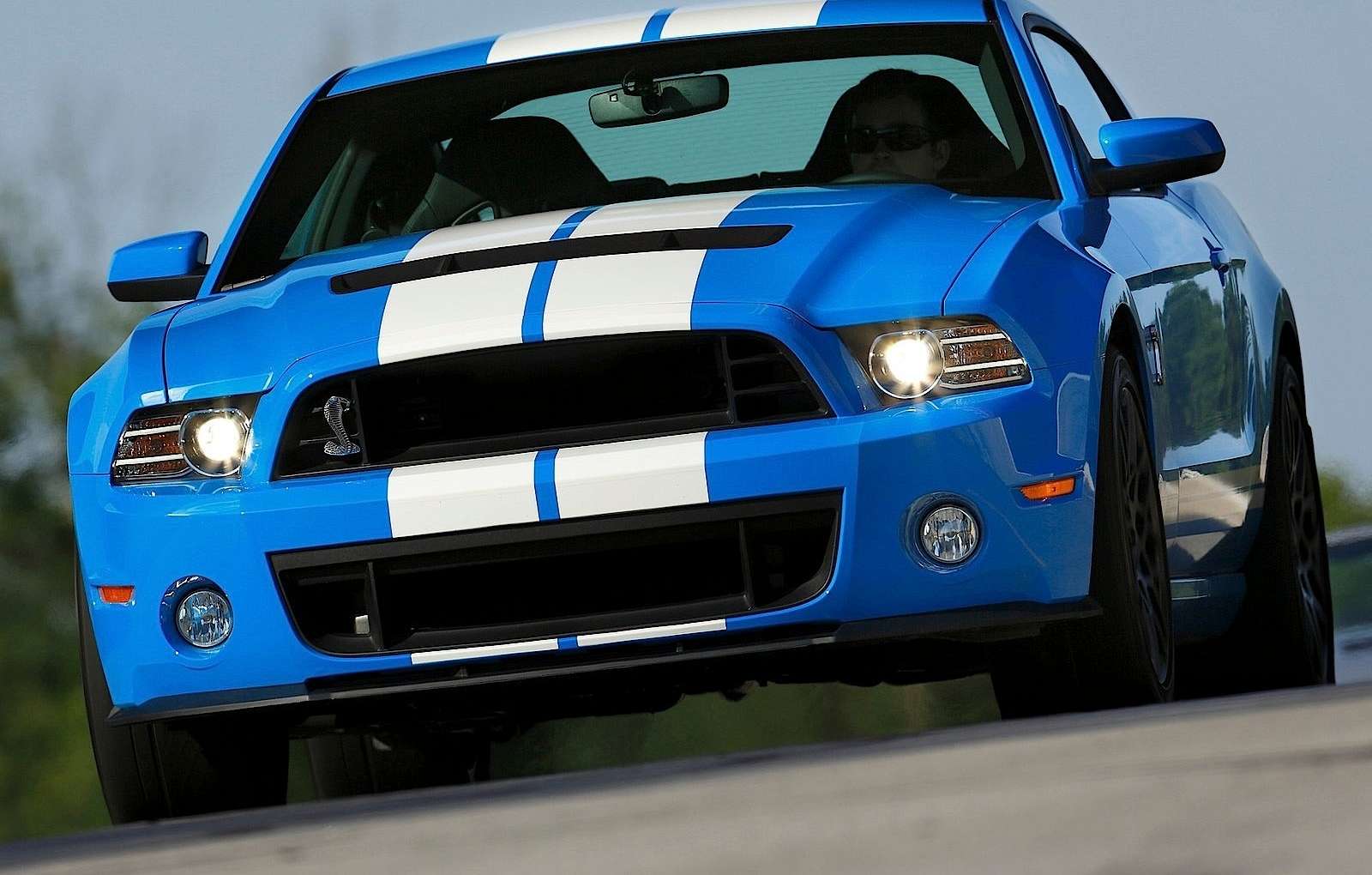
The Mustang convertible received the same ratings in the moderate-overlap front-impact, side-impact and head restraint tests. The convertible has not received ratings in the other categories.
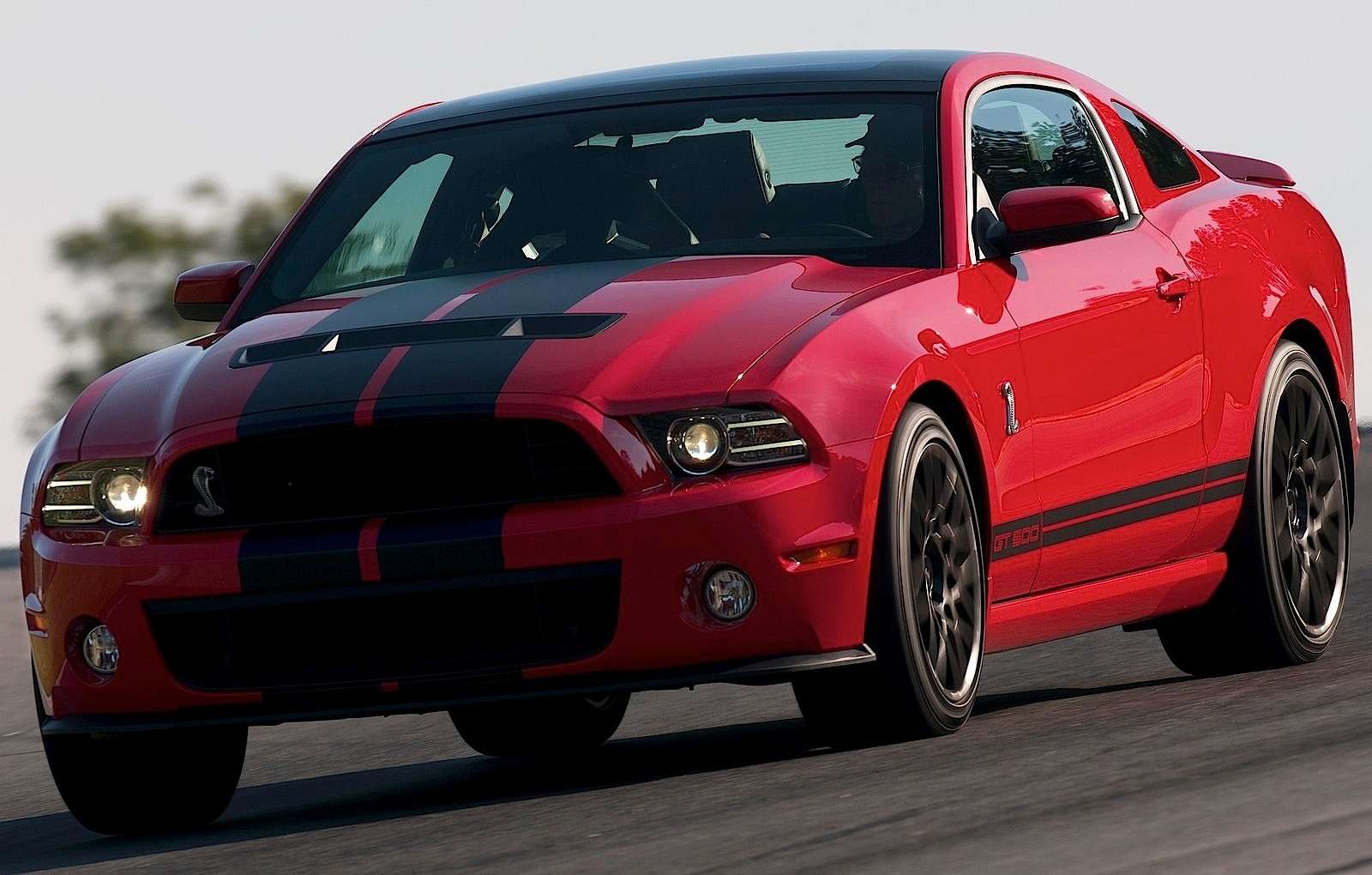
Based on our seat time in a Mustang EcoBoost and a Mustang GT, both equipped with the optional Performance package, the 2015 Ford Mustang is a significant step forward in overall refinement. The turbocharged four provides a fairly smooth and impressively broad-shouldered spread of power. During our yearlong test of the Mustang GT, we've found that the V8 is as exciting as ever, able to pin you to your seat like few other cars anywhere close to its price range can. The V8's subtly burbling soundtrack, however, isn't as prominent as those of previous Mustangs. Still, the quieter demeanor is nice on a long road trip, and those looking for more aural excitement can always consider aftermarket exhaust options.
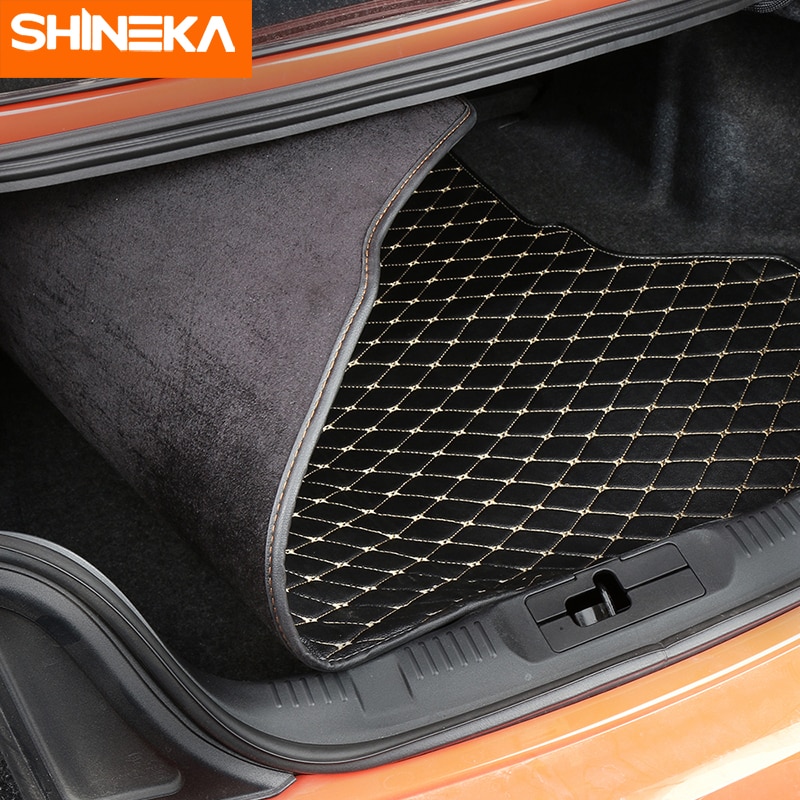
Both the EcoBoost and the GT handle impressively, with sharp steering and solid composure through turns. Being 100 pounds lighter over the front tires than the GT, however, the EcoBoost feels even more spry, turning crisply into corners with enthusiasm. Body roll is well controlled in both models, and the summer tires' cling on the pavement is tenacious. The new independent rear suspension has given the Mustang a big shot of refinement in the way it handles bumpy roads. The previous Mustangs' oftentimes jostling demeanor over broken pavement, especially when you push the car harder on a curvy road, has been replaced with a supple, confident demeanor.

The 2015 Ford Mustang's interior pays homage to Mustangs past with its dual-cowl-style dashboard while still offering all the latest modern conveniences. Depending on the trim level, even high-end luxuries such as adaptive cruise control and heated and ventilated front seats can be had. Materials quality is generally improved, and most drivers should be able to get more comfortable behind the wheel of the latest Mustang, as that wheel now features a telescoping function in addition to tilt adjustment.

Although the optional Recaro sport seats provide excellent lateral support, they are not perfect for every body shape. Thigh support is somewhat lacking due to a seat bottom that won't angle upward enough, while some longer-limbed drivers on our staff noted that their elbows occasionally bumped the aggressive side bolsters.
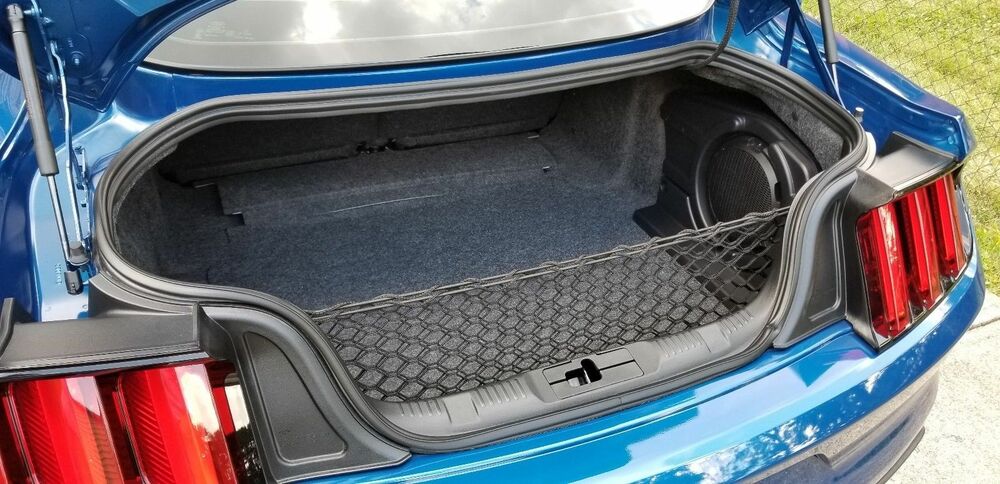
Ford's Sync voice activation system greatly simplifies operation of the audio, phone and navigation systems. The MyFord Touch interface is more controversial, however. There's a learning curve for getting the most out of the system, and operating the touchscreen can be distracting at times. In general, we prefer the easier-to-use touchscreen interface in the Dodge Challenger.

The new Mustang handles far better than past models. And we're not just talking about livelier cornering. The new independent rear suspension makes Ford's ponycar more nimble than its live-axle predecessors. But just as important as performance, the Mustang's new setup is more comfortable in everyday driving. In our tests, a passenger could even apply makeup without smearing. All Mustangs are quick, we just wish that the 310-horsepower turbocharged 4-cylinder version sounded more muscular. Not so for the 435-horsepower 5.0-liter V8 GT, which packs an auditory punch, and enough power to pin you to your seat. But even the 300-horsepower V6 model is a solid choice for most buyers. 2015 Mustangs with the 6-speed automatic transmission come with paddles for manual shifting, and feature downshift rev-matching for smoother transitions. We're even more impressed with the revised 6-speed manual transmission – with short throws and a solid feel, it makes the new Mustang all the more satisfying.

SAFETY SYSTEMSIt's not just the Mustang's looks and powertrain that have been overhauled. The new car now offers safety features such as blind-spot monitoring and forward collision alert, which actively monitor conditions to warn drivers of potential hazards. They cost extra, but instantly become priceless when they take action.IT'S BURNOUT-READYIf you're a Mustang 5.0 buyer, Ford's betting you like to burn rubber. That's why Mustang GTs allow – perhaps even encourage – drag-strip shenanigans. Manual-transmission models include launch control for maximum acceleration, while all 2015 Mustang GTs have the "line-lock" mode that locks the front brakes for standing burnouts.
The 6th-generation Mustang's interior is appealing and functional, especially if you step up to a premium trim. Modern yet retro, Ford's newest ponycar boasts easy-to-reach audio/climate controls, sturdy switches and comfortable front seats. The new Mustang distinguishes itself with a dash badge commemorating the model's 50th anniversary. The two rear seats are tight for adults, especially in headroom. Trunk cargo space is better than expected – 13.5 cubic feet in coupes, 11.4 in convertibles – and the rear seats fold flat to accommodate longer items. In convertible Mustangs, only one hand is needed to release the latch for the power-operated soft top.
Be ready to garner attention in your new Mustang. It's easy to see why: The 2015 Mustang simply looks fantastic. At once immediately recognizable as a Mustang thanks to its long hood, sloping fastback and tri-bar taillights, it's also thoroughly modern with sleek lines, aggressive headlights and windswept design. Ford has nixed the "hockey stick" side contours in favor of sleeker creases, and the results are beautiful. In functional terms, 2.3-liter models have active grille shutters that can close to direct airflow around the car to enhance efficiency. Mustang convertibles have a fabric top that's lined and insulated within.
The 2015 Ford Mustang coupe and convertible come in three major trims: V6, EcoBoost and GT. A base V6 model includes push-button start, 6-speaker AM/FM/CD audio with an auxiliary input, rearview camera, Ford's Sync communication and entertainment system, high-intensity headlights, 17-inch wheels, and selectable-effort power steering. Also standard is Track Apps, which displays performance metrics such as acceleration times. EcoBoost models include the 2.3-liter turbocharged 4-cylinder engine, 6-way power front seats and 18-inch wheels. GT models include the 5.0-liter V8, 19-inch wheels, the line-lock feature, and launch control on manual-transmission models.
There are many ways to make your new Mustang perform better, be more comfortable, or simply look meaner. Base V6 models can be had with a 6-speed automatic transmission, power front seats, parking sensors, and 18-inch wheels. EcoBoost and top-line GT models offer a 12-speaker Shaker audio system, navigation, leather seats and safety features such as blind-spot monitoring and forward collision alert. Adaptive cruise control is also now available on Ford's 4-seat performance car, as are heated and cooled front seats and performance packages. EcoBoost and GT models are available with a 50th anniversary package with leather seats and commemorative badges.
Based on the 2015 Ford Mustang GT350, the GT350R takes it up one more notch for track-day enthusiasts by bringing more racing oriented parts. The all new, most powerful naturally aspirated Mustang Shelby GT350 broke cover on the Internet just before the 2014 Los Angeles Auto Show where it has been showcased afterwards. Unlike previous iterations, the sixth-generation Ford Mustang was developed as a global car, receiving the company's trademark trapezoidal grille and an independent rear suspension. The 2013 model-year Ford Mustang Shelby GT500 was made to go where no other Mustang has gone before, boasting a 662 bhp engine and reaching speeds of more than 200 mph. The GT Mustang belonging to the fourth generation maintained the same power output from the Overhead cam 4.6 liter engine which was able to produce more torque than the base 302 version. Still, many owners complained that the GT version was in fact slower, despite the bigger revs displayed on the counter A new engine and design would come stating with 1999. Fresh off the production line, the third generation Mustang was already modified by 1981 with a performance version, the Turbo 4. The 1979 Mustang was released after the success of the second generation. in 1978 the second generation Mustang was reaching its end. The 1971 model was probably the longest Mustang produced. In 1970 the Mustang was facelifted yet again, this time all the headlights were moved inside the grille. 1968 was the year that marked the first major redesign for the Mustang. The 1966 model altered the trim levels on the Mustang. As was a custom in America at the time, every year modifications would be made to a car. 1965 was the first year the GT package was introduced in the Mustang line-up under the name "GT Equipment Package". Based on the 1964 Falcon platform, the first generation Mustang would become an American icon and define the term "pony car", a special breed of cars.
Henry Ford started the company in 1902 with $ 28,000 in cash from twelve investors, among which were John and Horace Dodge, who would later found the Dodge Brothers Motor Vehicle Company. He was 40 years when he first established the company's first factory on Bagley Street, Detroit.
He would later incorporate the firm on June 16, 1903. Ford Motor Company would go on and label their models chronologically in alfabetical order, starting with the Model A to the Model K and Model S, which was Ford's last right-hand steering vehicle. Then, in 1908 Ford introduced the Model T, which was designed by Childe Harold Wills and two Hungarian immigrants, Joseph A. Galamb and Eugene Farkas. This model proved to be of quintessential Ford vehicle, placing the company among the most influential automotive brands in history.
The Ford Model T was reliable, practical and affordable, which made it a big hit in the US, where it was advertised as the middle-class man's vehicle. The car's success compelled Ford to expand his business and layout the basics of mass production principles in 1913 with the introduction of the world's first vehicle assembly line. By 1912, production figures for the Model T alone reached nearly 200,000 units.
This organizational innovation brought in the vehicle construction field allowed Ford to reduce chassis assembly time by as much as 10 hours, dropping from 12 ½ h to 2h 40 min.
Besides ensuring the efficiency of the production process, Ford turned his company into an interactive entity by announcing a new profit-sharing policy. This would grant buyers a cut of profits if sales reached 300,000. As expected, sales effortlessly reached the 300k threshold and went even further to hit a record 501,000 in 1915.
As part of a new set of financial tactics, Ford provided working places for the disabled who otherwise had a hard time finding a job, reduced work shifts and doubled all employee's salaries. Changes like these sparked a tremendous sales increase while also setting the base of modern working conditions.
Still, the US and Canadian market would prove to be too small to fit Ford's plans. By the mid 20's, the Ford label had crossed the ocean and reached England, France, Germany, Denmark, Austria as well as distant Australia. The company's activity on European grounds further helped the brand's revenue growth.
War would not shake the Ford company as bad as other car makers. Post WWI improvements include the introduction of four-wheel brakes and a series of new vehicle releases to match new consumer demands. In 1922 Ford entered the luxury car segment with the acquisition of the Lincoln Motor Company, named after Abraham Lincoln whom Henry Ford admired.
Ford Motor Co. was one of the few big American corporations to survive the Great Depression, although the plummeting automotive sales led the company to scale down its operations and lay off many workers. In May 1929, Ford Motor Co. signed an agreement with the Soviet Union to provide technical assistance until 1938 to construct an integrated automobile-manufacturing plant at Nizhny Novgorod, in exchange for the Soviets purchasing $ 13 million worth of automobiles and parts. Under this agreement many American engineers and skilled auto workers went in 1932 to work on the Gorkovsky Avtomobilny Zavod (GAZ), or Gorki Automotive Plant. The few who remained in the Soviet Union after the completion of the plant fell victims to Stalin's Great Terror, ending either shot or exiled to Soviet gulags.
With the arrival of WWII Ford increased its influence on the global stage becoming an active player in the war effort, a thing underlined by US President Franklin Roosevelt referring to Detroit as the "Arsenal of Democracy." When the US War Department handed production of B-24 Liberator airplanes to Ford, the output rose to 20 airplanes per day instead of only one per day managed by the Consolidated Aircraft Corporation.
After WWII Ford continued its passenger vehicle operations and in 1955 introduced the iconic Thunderbird model. Then it introduced the Edsel brand in 1958, which proved to be a failure and was dissolved in 1960. Part Edsel's failure as an automotive brand resided in the onset of the 1957 recession in the States and the vehicle's high price tag.
Ford Motor Co. managed to get back up from its Edsel failure with the introduction of the Falcon model in 1960 and the Mustang in 1964. The company's next major step was represented by the formation of Ford Europe division in 1967.
Ford plunged into a state of brand-fatigue that would bring the company to the point of near bankruptcy. Following major sales losses in the 2000's, Ford was pinned against the wall by debts and the imminence of closing down.
Preferring to make it back on its own, Ford mortgaged all of its assets in 2006. As of then, the company has releases a variety of new models both under the Ford brand name and the rest of the sub-brands it owns such as fresher and edgier Mercuries and flashier Lincolns, Ford's luxury division. Business in Europe has also been good for Ford, especially after the introduction of the Focus model in 1997 and although it hasn't fully recovered, it's definitely on the way to regaining popularity.
2015 Ford Mustang Consumer Reviews
gackedicing, 01/19/2015
GT Premium 2dr Convertible (5.0L 8cyl 6M)
A Horse of a Different Color
Like the Shelby Mustangs from 1968-1970, this new one is an odd contradiction: Both brutally powerful (in 435-hp GT form) and luxurious at the same time, it recalls those late '60s boulevard cruisers more than it reminds me of the more simple, honest 5.0 liter GTs of the 80's or the straightforward 2005 retro reboot. That is ok, as my 2015 GT Convertible finds me in my mid-40s, ready for a little more refinement in my car. This is my 19th Mustang; my tastes have changed and the car has grown up along with me. This car is built like an anvil and full of modern conveniences. It seems low and heavy at first, but soon it shrinks around you and feels like an old pair of Levis.
interestrigil, 08/06/2015
V6 2dr Convertible (3.7L 6cyl 6M)
Pulsating vibration 60-75
Have had the car for 3 weeks already been in the shop 5 day. It has a pulsating vibration between 60 and 75...horrible and feels unsafe to drive. Replaced driveshaft and rear differential on a car with barely 1000 miles and still not fixed. Lemon law is next if it's not resolved ASAP.
romenike, 01/25/2015
EcoBoost Premium 2dr Coupe (2.3L 4cyl Turbo 6M)
All I can say is WOW!
I researched for months trying to find the right car for me. I ran across the 2015 Mustang and thought I'd give the old pony a try. I had the car built this past fall. When it arrived, I wasn't prepared for the end result. It was AMAZING! Pictures, videos, do no justice! My only complaint is that the back seat is pretty pointless. Even kids have trouble getting back there. It is a major headturner. Everywhere I go, people are complimenting me on this car. If you are a looking for a nice sports car, look no further. I am a 110% happy with my car!
pulsestreese, 12/14/2016
GT 2dr Coupe (5.0L 8cyl 6M)
This Pony has more than one trick!
I bought this car in July 2015; traded in a 2014 Mitsubishi Lancer Evolution X MR. The Evo was a rocket on wheels, but the Mustang is a true GT car (Grand Tourer/Gran Tourismo). I'd subjectively rate this car as about 4.7, but there's no decimal in the star rating. I had test driven a 2010 GT, and HATED it. The engine was great, but the rest of the car was junk. It FELT cheap (brand new, rattled and squeaked, and only had about 15 miles on the odo). It did NOT like corners. At all. When the back end tries to beat the front around a corner, that's not a good thing. The interior was horrible, CHEAP plastic EVERYWHERE. That car had one trick ... go fast in a straight line, hoping the thing didn't vibrate apart along the way. The 2015 is several orders of magnitude better than the 2010, hands down!! Particulars: The Mustang GT Coupe with a 6 spd manual has plenty of get up and go. Is it the fastest car out there? No. But, with 435 bhp on tap, it WILL move. It accelerated faster off the line than the Evo. The track functions are fun to play with in an empty parking lot, or a deserted mountain road. The brakes on this car are incredible! Gotta be really careful, as they grab FAST and HARD. There is pretty much no fade through use. So far, as for road-holding, you have to work to make it lose traction. Seriously. Taking some of the curves on the highways in Phoenix at 80+ mph is almost, dare I say it, yawn-inducing! No fuss, no muss, no worries at all. Steering is precise, and there is decent feel in the wheel. It's not like the old manual steering days, but you can still tell what's going on up front. The front seats are REALLY comfortable! I did a 16 hour road trip, only stopping for gas, and I didn't end up with any fatigue or discomfort while driving. The bolsters are good at keeping you where you need to be without being painfully intrusive like Recaro's can be. Rear seats ... good for small people. I mean SMALL. Three feet or less. At 6' 4", no "car" is easy to get into or out of. Trucks, yes. Cars? No. However, for average height people, entry/exit is a breeze. Ford did a really good job with the noise dampening. The stock exhaust has a pleasant, albeit quiet, growl at highway speeds. However, tire noise on worn tires can be a bit intrusive, but not obnoxiously so. Ride comfort ... see above about the 16 hour road trip. There are sufficient cubbies to lose stuff in. The instrumentation is clear and easy to read most of the time. There are occasions when the auto setting for lighting is less than ideal, like exiting a tunnel. The dash is pretty dark at that point and you may not be able to read the instruments until the lights kick back off. The interior is well laid-out and the controls are easily within reach. Commonly used controls are in good spots. The materials used are generally MUCH better than in previous generation Mustangs, but don't expect a Rolls Royce or Bentley. The radio is pretty good. I don't have navigation, but getting my phone hooked up to Sync was pretty easy. There are two USB ports for connecting/charging devices, or you could stream audio via BT. Climate controls are easily reached and used, and the heater/A/C both work well. The only niggling little things that I find annoying are a rattle that has developed behind the center dash stack (FIXED!), and the tendency of the transmission to be a bit balky shifting into 6th. Otherwise, I think this car really does follow the spirit or intent of a GT (Grand Tourer/Gran Tourismo) vehicle. It has power, comfort, poise, and style without getting into cartoonish or boy racer realms. While this car may have been marketed to a younger audience, it should also appeal to folks over 40 who don't have to worry about kids in the back seat. It can represent on the track as well as devour long miles in comfort. This is probably THE best Mustang Ford has ever produced! The early models in the 60s were great, but thanks to 50 years of evolution, these are just better in pretty much every way. It ain't perfect, but it ain't far from it, either. EDIT: Corrected a couple of grammatical issues. Also, wanted to add that, for the price (mine was just over $ 34K), you really can't beat it. The Evo was $ 47K! I would seriously recommend you check this car out before going for pricier European options, or even other American options. I've driven Challengers and was not impressed. I drove an older Camaro (2011), and like it, but I like my Mustang better. It's not gonna be for everyone, but it should be tested before being removed from consideration! UPDATE: Still loving my Mustang! It cruises smoothly at highway speeds, as any true GT car should. The mileage is a function of throttle position - the mileage below shows combined city/highway driving, the highway cruising at 75-80 (and that's just keeping up with traffic!). Despite its quirks, LOVE THIS CAR!!
uncheckedseasoned, 11/08/2019
2018 Ford Mustang
"Proud Pony"
This car is flat out amazing. Handling, mileage, power, styling. It's grin inspiring and we are about to buy our 3rd Mustang for the family! Once you drive one, you'll understand. The 10 speed auto trans is how we went, with the turbo 4, and it is amazing! The car does 13.75 in the 1/4 mile, bone stock. No tune etc. Straight off the show room floor. Then, with a bit of tweaking, and very little cash invested, it now does 12.78 1/4's at 106 mph. CAI added, 3inch stainless exhaust added and a tune from a local tuner shop - all told, 2k more invested than spent (paid $ 24,500 off the lot.) - Seriously could not be happier. It flys, gets amazing mileage and with MBRP exhaust, sounds awesome. FORD, - I'm impressed!
cowsstar, 10/13/2019
2019 Ford Mustang
"8th Mustang, Still love them"
Well as the title implies this is my 8th Mustang, I traded a 2007 Porsche Carrera, for this 2019 GT Premium, with manual transmission and adaptive exhaust, GT performance pack 1, 401A package, in Orange Fury. Since I have had years from 1967, to a slew of FOX bodys, an SN95, a 2014 and now this. I have to give Ford props. This is the first Mustang that I just love the way it is. I could not do a single mod and love it just the same. The exhaust tone is perfect, no drone and just motor music. The interior is comfortable, and I'm no small guy. The technology is just fun from Nav, selectable exhaust , steering and overall instrument themes adjustability. The 5.0 is just a dream to drive. Lots of power, and the torque allows you to not have to shift up and down so much. Shifting is clean , just a little soft on the second gear. I went with orange fury, the color is a head turner. AS, I said at the beginning this replaced my Carrera and the ride feel between these cars is night and day. The Porsche was light and nimble the Mustang is heavier and you can feel the push in turns.Read less
whispersbrain, 10/06/2019
2015 Ford Mustang
"5%20Bad%20Foods%20To%20Avoid"
Air condition problems
Source: https://www.mycarspecs.com/car/2015-ford-mustang-base-gt-fastback






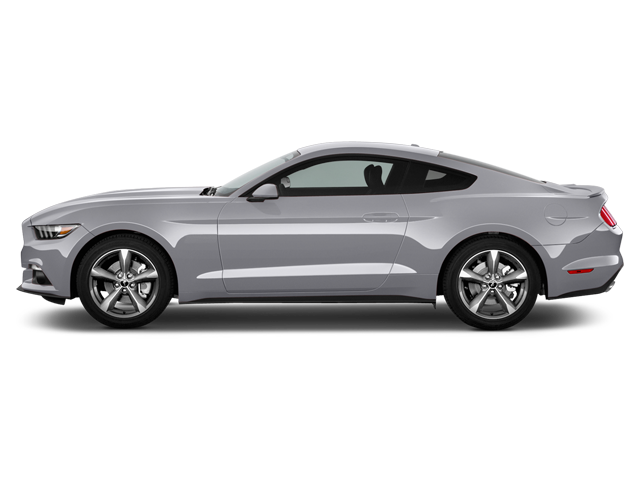


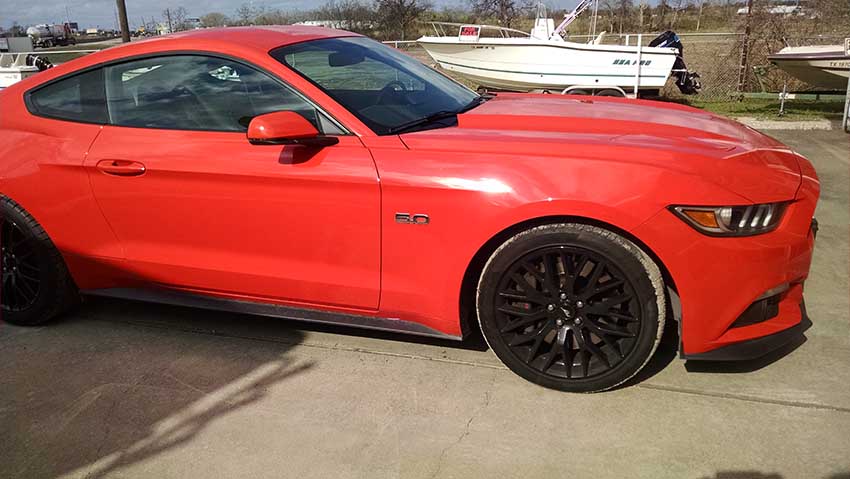



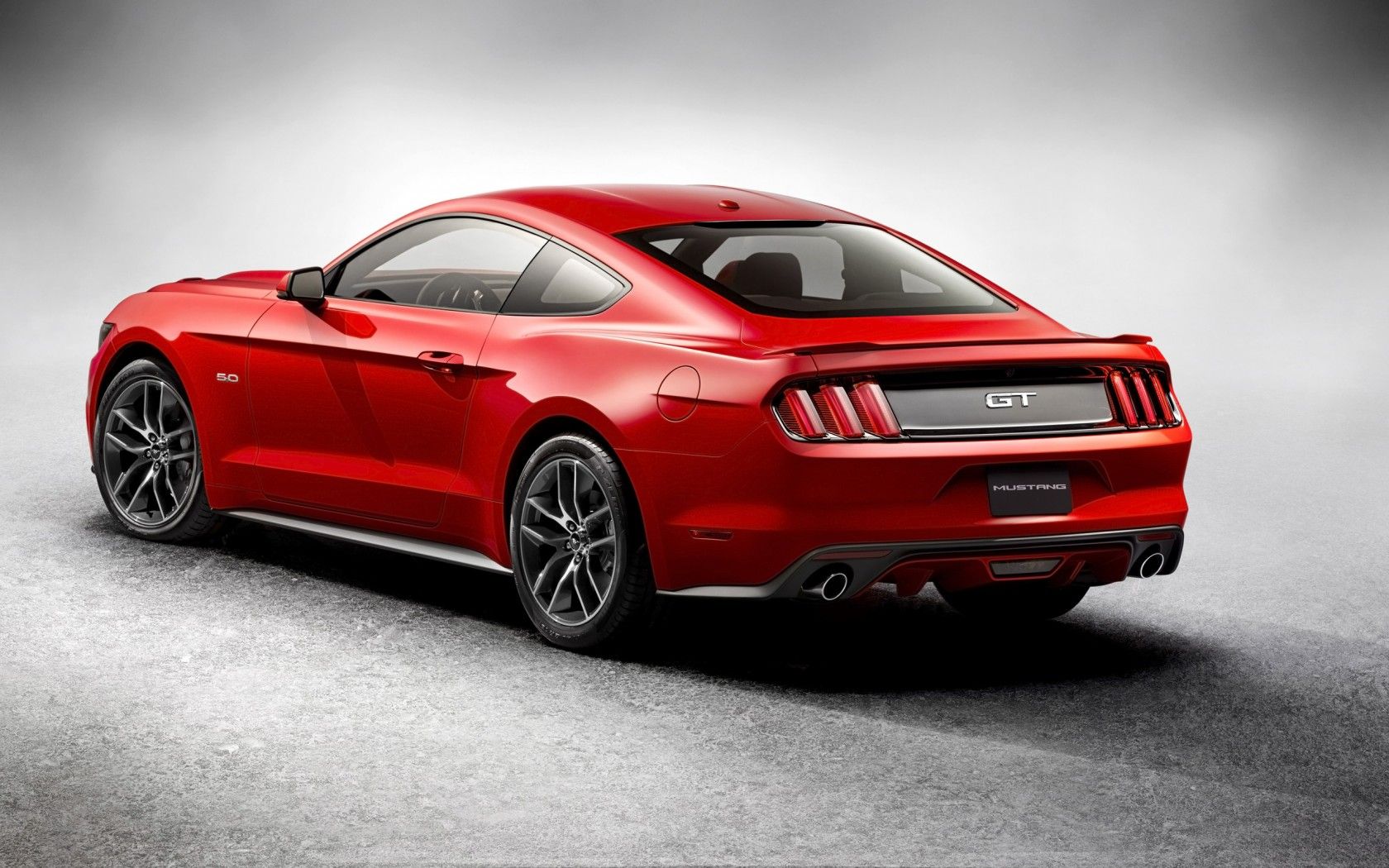
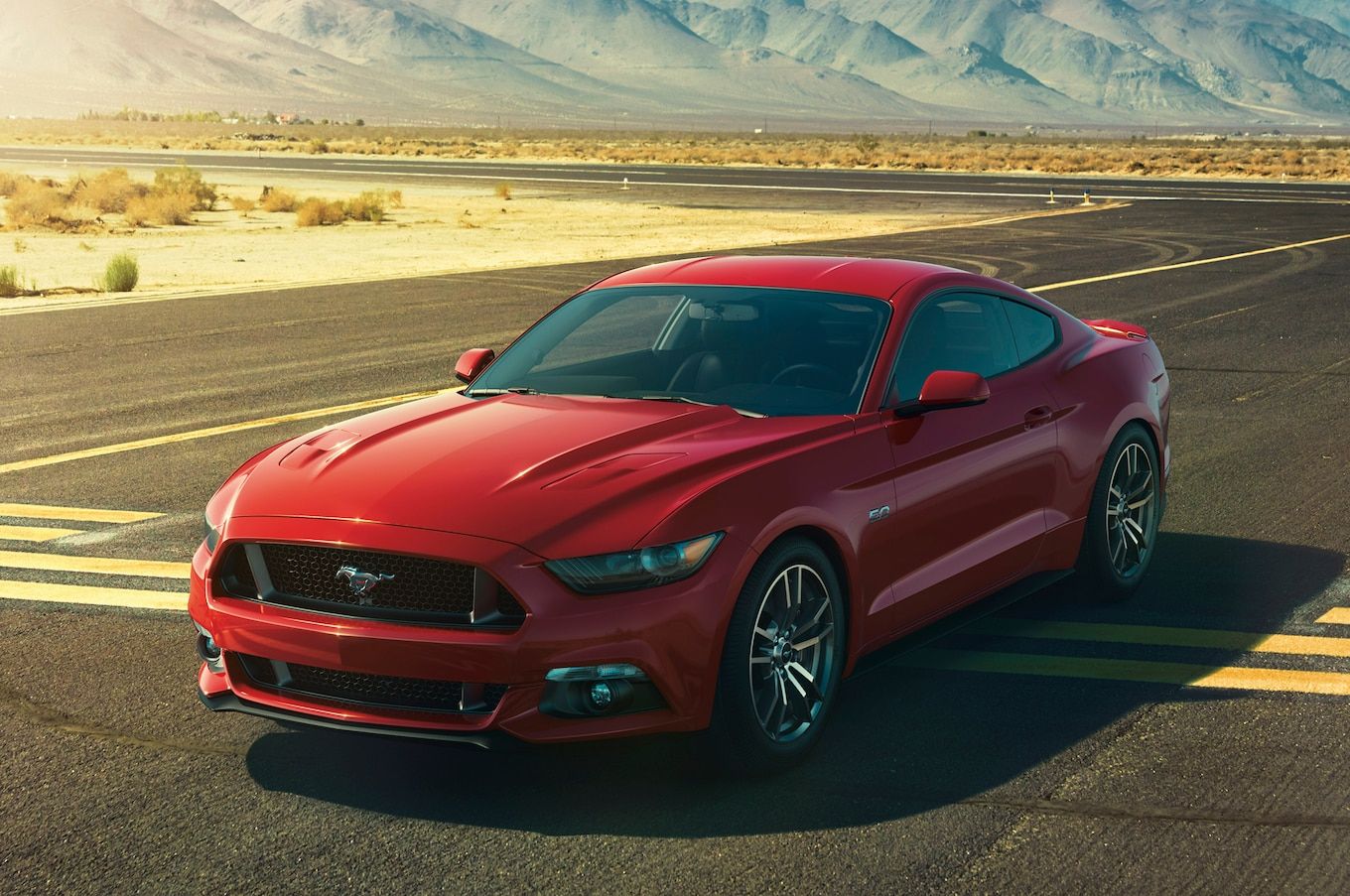
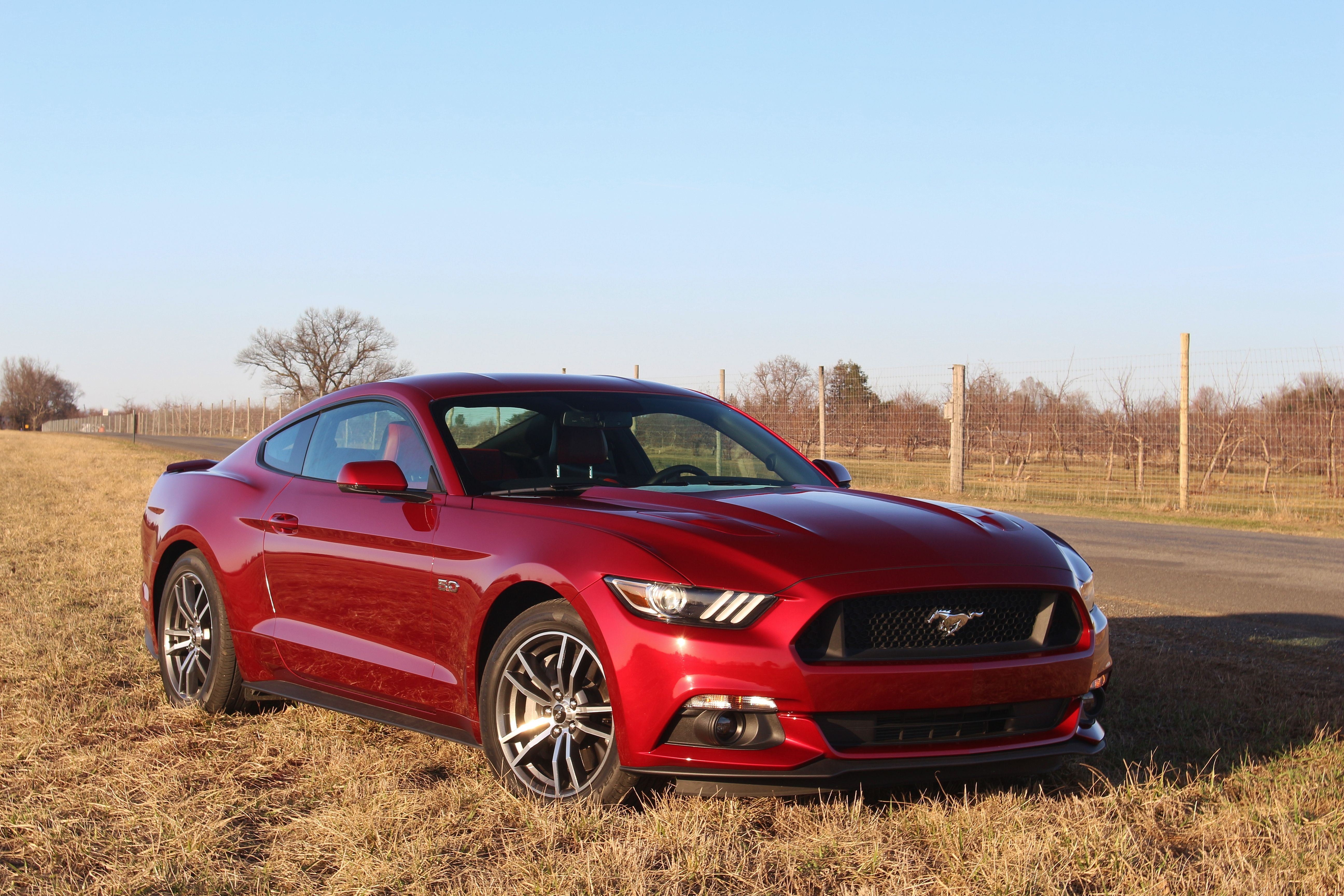
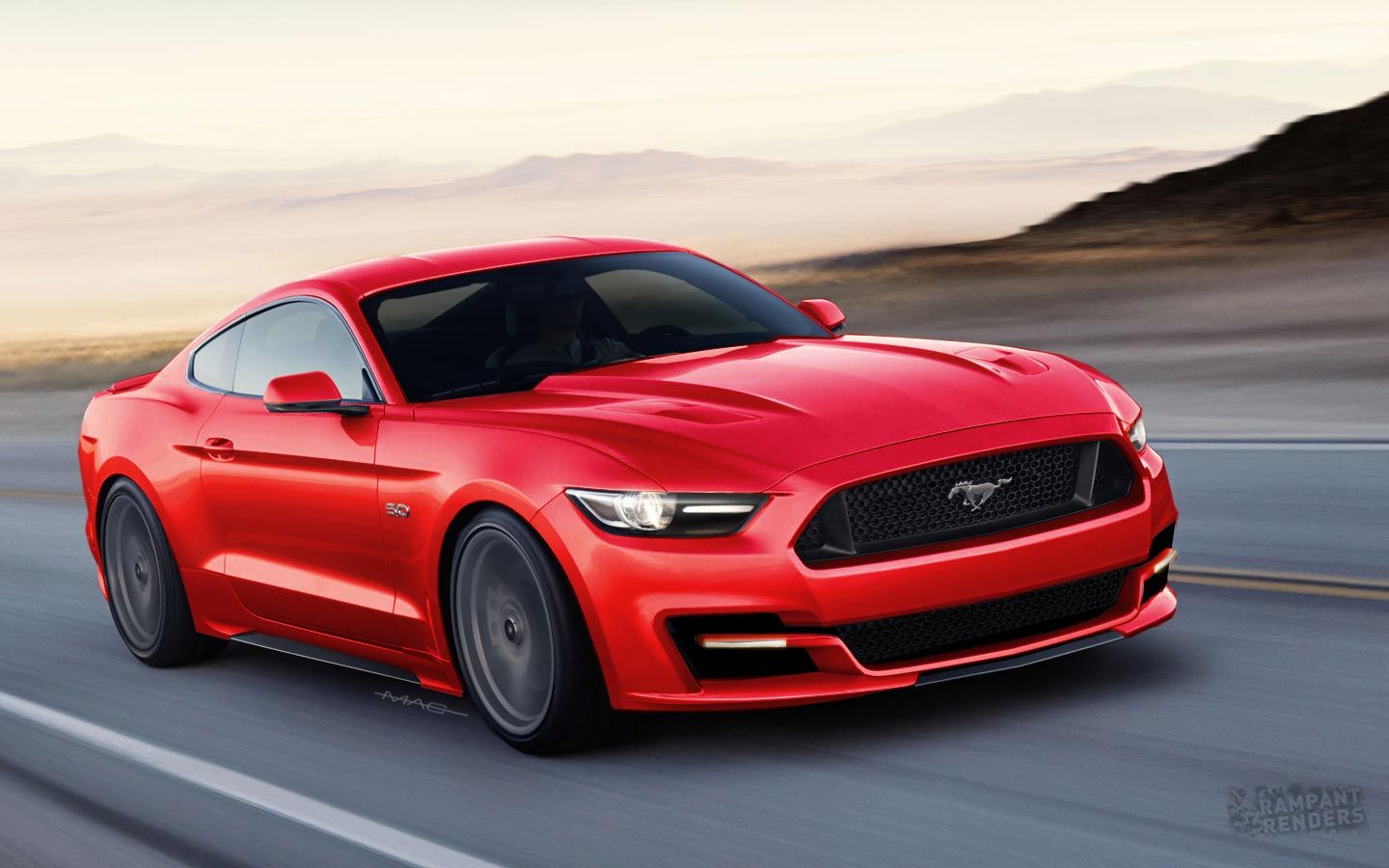
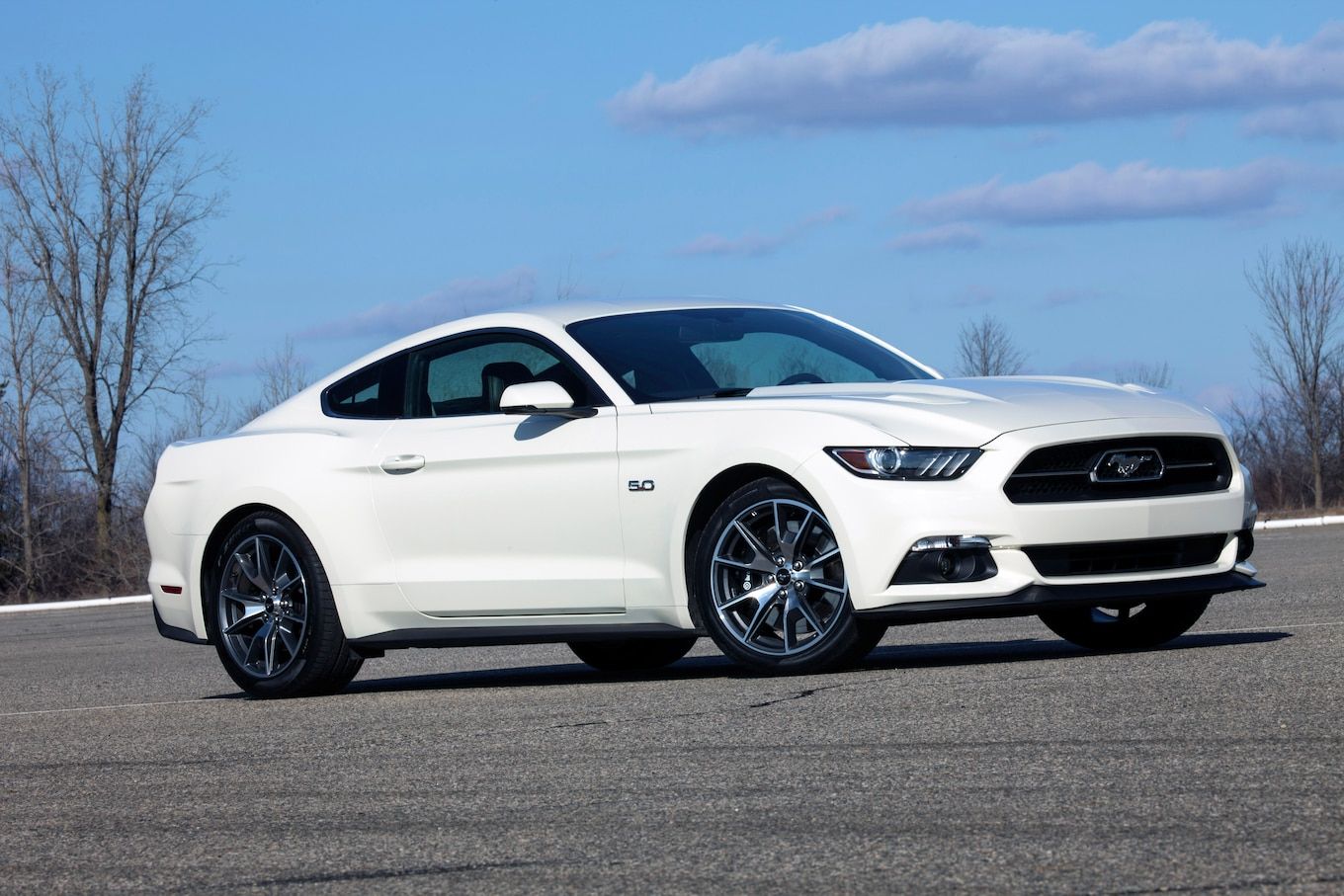
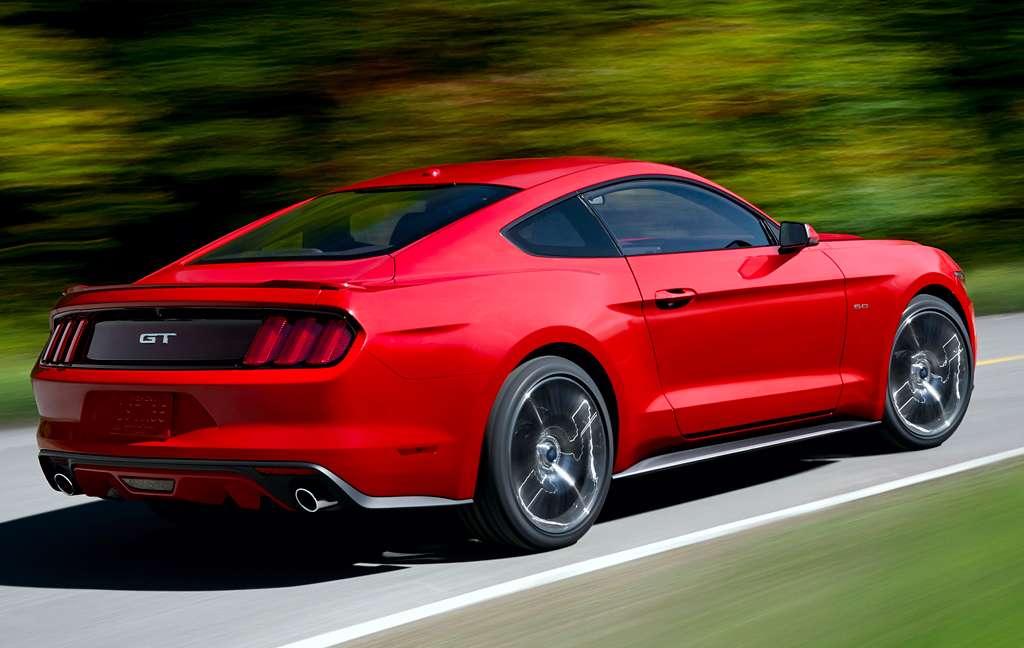

Tidak ada komentar:
Posting Komentar